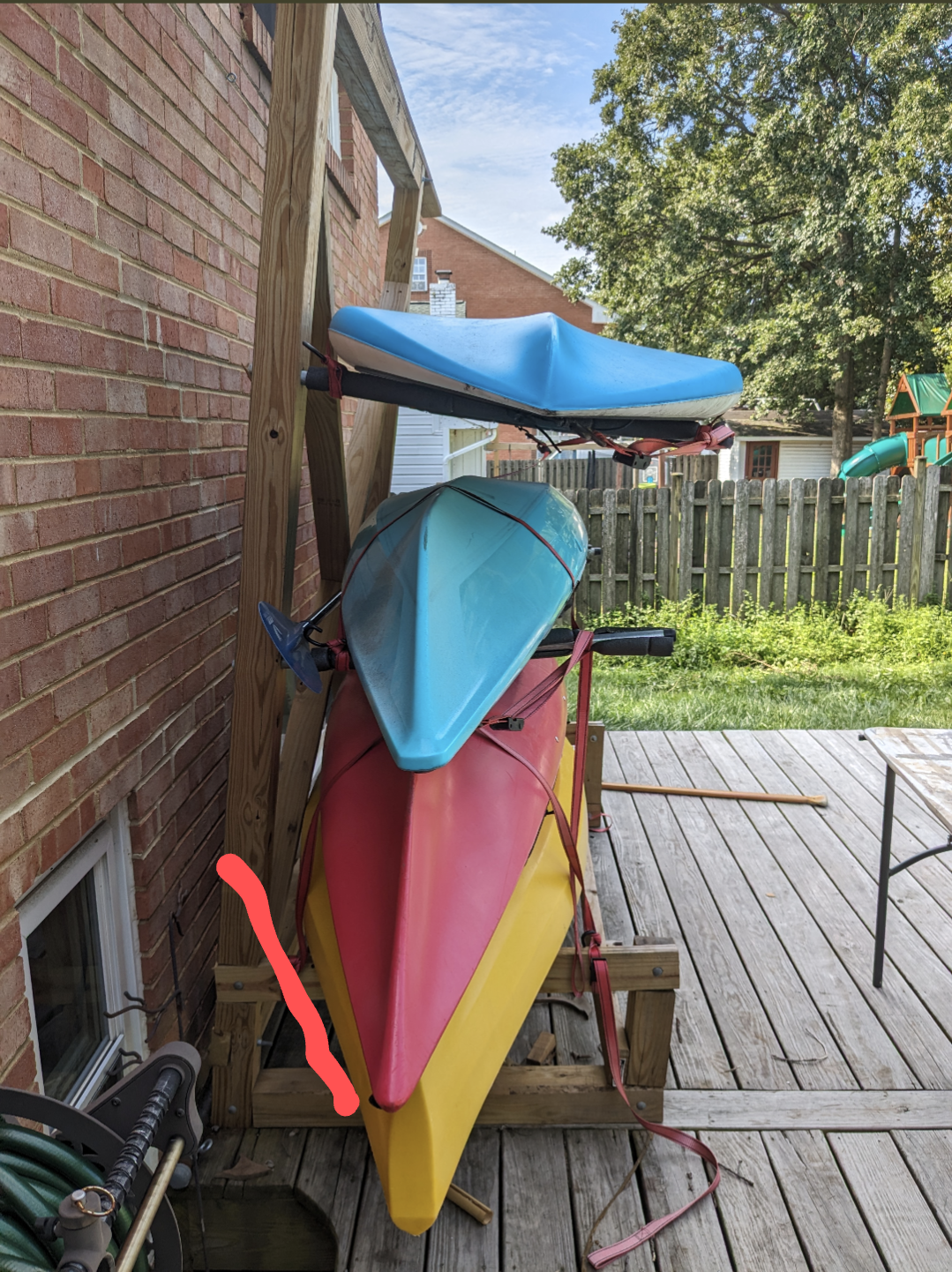When I built this rack, it was perfectly square, the saddles were all tight, and it didn’t move at all. 3 months later, I guess the pressure-treated wood has shrunk and it’s sagging.
So what’s the right way to build something like this? Just let the lumber sit for several months to dry out? Don’t buy from Home Depot? Is there a way to tell when the wood is “ready”?
Based on this photo, it looks like it is failing in shear. It’s not a wood problem, it’s a design problem. The upper joint on the far right in the photo has clearly rotated and not a single brace for shear is visible. Think triangles and fix the design. It looks like this could be saved
Thanks. The plan to fix it was to basically put shims into the joints as a temporary method to square it, and then add some additional braces.
I designed this assuming specifically that the square cut joints would be strong enough, which was obviously wrong. But it does seem like the joints have expanded, or the beams have shrunk. Or both. Because each joint was a tight fit when I built it.
I don’t think wood shrinking/movement is to blame here at all. With single attachment at each joint and no bracing, there’s nothing stopping the whole thing from “racking” e.i. going from a rectangle to a parallelogram. You need diagonal bracing.
Woodworker here. Building with “wet” wood will always result in some wood movement. For exterior applications, wood with around 9-14% moisture is reasonable. For interior applications, more like 6-8%. You can get moisture measuring devices to give you an exact reading.
Green treated wood is not great as most box stores will not allow it to dry properly before putting it up for sale. You can plan for this will corner bracing and such, but it will move on you if too wet. You can find stacks in the lumber yards that are drier than others which can help. Another option for exterior applications is to use kiln dried wood such as cedar and then apply a good sealer to it. If you really want to use the green treated stuff and it’s too wet, stack it with shims between the layers and allow it to air dry until you get to the desired moisture. That should minimize the movement after building with it.
There is a good article here.
As others have pointed out, there is no bracing against the direction the weight is pulling the stand. Sacrificing a foot or two at the bottom to make room for bracing would improve the strength immensely.
You could also extend the base to the rear by 8-12" and adding cables from the base to the top in tension. this would provide at least some force to counter the weight of the kayaks/canoes.
The other thing to notice is that you only have a single bolt at your connection points. One bolt effectively acts like a pivot point. It’s only providing rotational resistance in one direction.
You can either do some joinery to help strengthen the connections (admittedly overkill) or use two fasteners and glue in place of a single bolt.
Remove the load, square it up, and attach 2x4s like this on both sides. It will help a lot and you won’t lose any used space.

I’ve never known wood to shrink
There’s lot’s of people learning in this thread.
Untreated lumber will soak up water and swell, the dry in the sun and shrink. This process will allow natural twists to reassert themselves and stress and strain will warp into the wood.
Right, so how do you account for that in the design? In my photo, I didn’t account for it at all. The square cuts have changed and it’s failing. I can resolve it with braces as suggested, but now I’m wondering if those braces will change and it’ll go out of square again.


